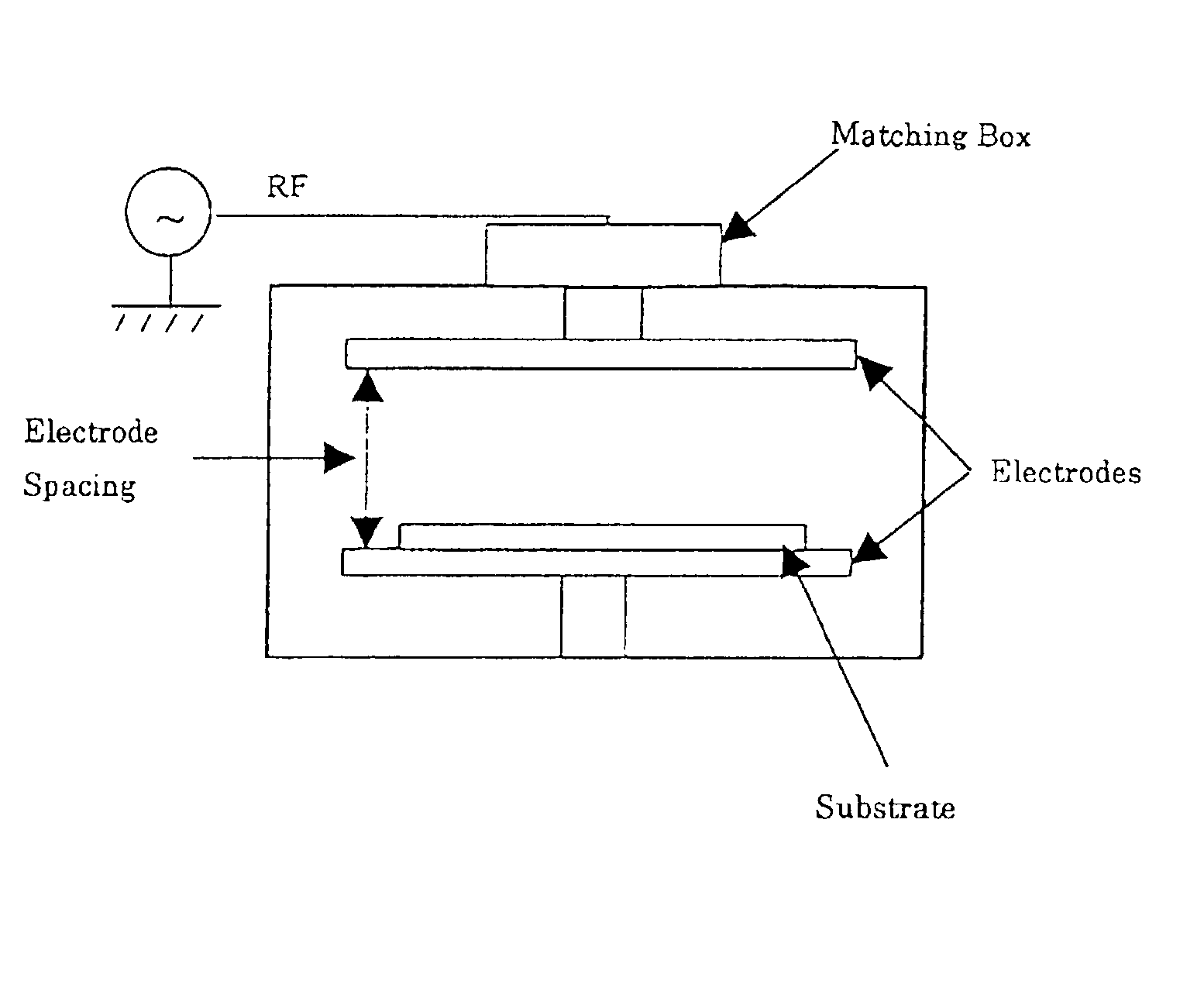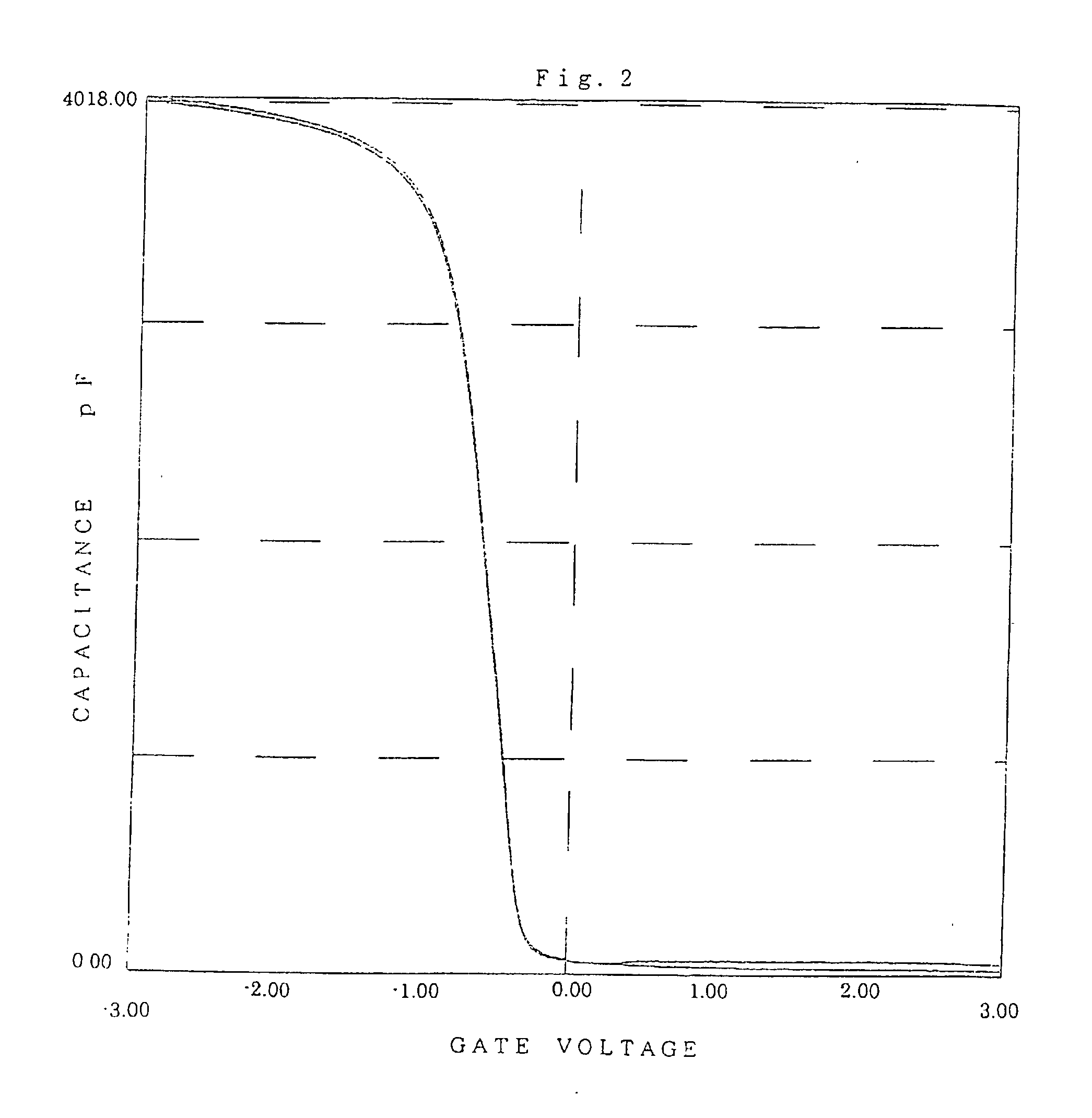Method to fabricate thin insulating film
a thin film, insulating technology, applied in the direction of vacuum evaporation coating, transistor, coating, etc., can solve the problems of affecting the performance of tft, affecting the performance of plasma processes, and expensive vacuum tools, etc., to achieve high quality
- Summary
- Abstract
- Description
- Claims
- Application Information
AI Technical Summary
Benefits of technology
Problems solved by technology
Method used
Image
Examples
example 2
[0020] In the disclosed process of example 1, the silicon substrate to react with plasma was placed between the electrodes between which the plasma was created. It is possible to create plasma by applying RF power in a separate chamber and then transfer the plasma to another chamber in which a silicon substrate to react with the plasma is placed. Such process is called remote plasma process and is expected to reduce plasma damage to the substrate and further improve the quality of the SiO.sub.2 films. MOS capacitor were fabricated using the SiO.sub.2 films produced by remote plasma oxidation. For the SiO.sub.2 formation, the pressure was 1 atmosphere (about 100 kPa), the temperature was 200 .quadrature.{haeck over (Z)}, the O.sub.2 / He gas flow ratio was 1.5%, and the power density was 70 W / cm.sup.2. FIG. 3 shows the C-V characteristics of the MOS capacitor. In spite of using very high power density, no hysterysis is seen in FIG. 3, showing low damage to SiO.sub.2 films by remote pla...
example 3
[0025] The SiO.sub.2 film produced by the disclosed process was incorporated in the fabrication process of TFTs. Two kinds of TFTs were fabricated. 1. Reference TFTs, which were fabricated by a routine TFT process and 2. Plasma oxidation TFTs, which were fabricated by the following steps, of which step 3 includes one of the methods related to the present invention.
[0026] 1. On a glass substrate, amorphous silicon layer with a thickness of 50 nm was deposited by LPCVD method.
[0027] 2. The amorphous silicon films was laser annealed by a XeCl pulsed laser to change it in to polycrystalline silicon with an approximate grain size of 0.3 micrometers, and the polycrystalline silicon layer was subsequently patterned by photolithography to make islands.
[0028] 3. An SiO.sub.2 layer (SiO.sub.2 layer 1) with a thickness of 4 nm was fabricated over the polycrystalline silicon applying RF power to oxygen-helium gas mixture at pressure substantially close to 1 atmosphere (about 100 kPa). An SiO.su...
PUM
| Property | Measurement | Unit |
|---|---|---|
| Length | aaaaa | aaaaa |
| Fraction | aaaaa | aaaaa |
| Fraction | aaaaa | aaaaa |
Abstract
Description
Claims
Application Information
 Login to View More
Login to View More - R&D
- Intellectual Property
- Life Sciences
- Materials
- Tech Scout
- Unparalleled Data Quality
- Higher Quality Content
- 60% Fewer Hallucinations
Browse by: Latest US Patents, China's latest patents, Technical Efficacy Thesaurus, Application Domain, Technology Topic, Popular Technical Reports.
© 2025 PatSnap. All rights reserved.Legal|Privacy policy|Modern Slavery Act Transparency Statement|Sitemap|About US| Contact US: help@patsnap.com



